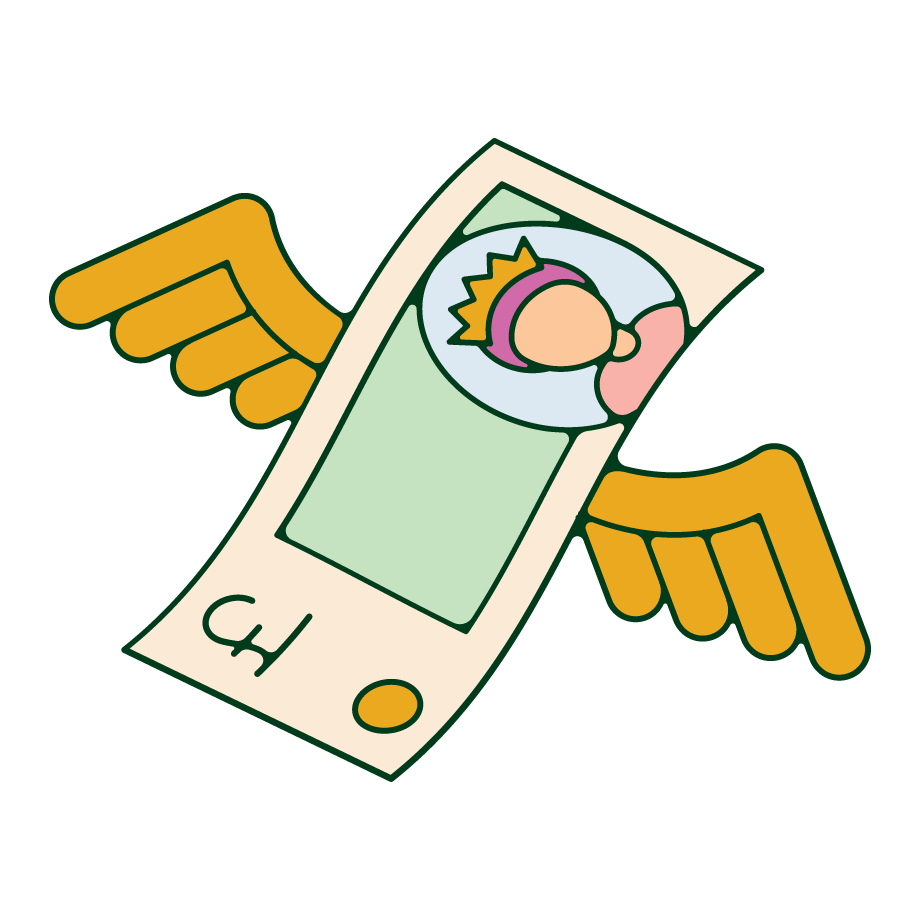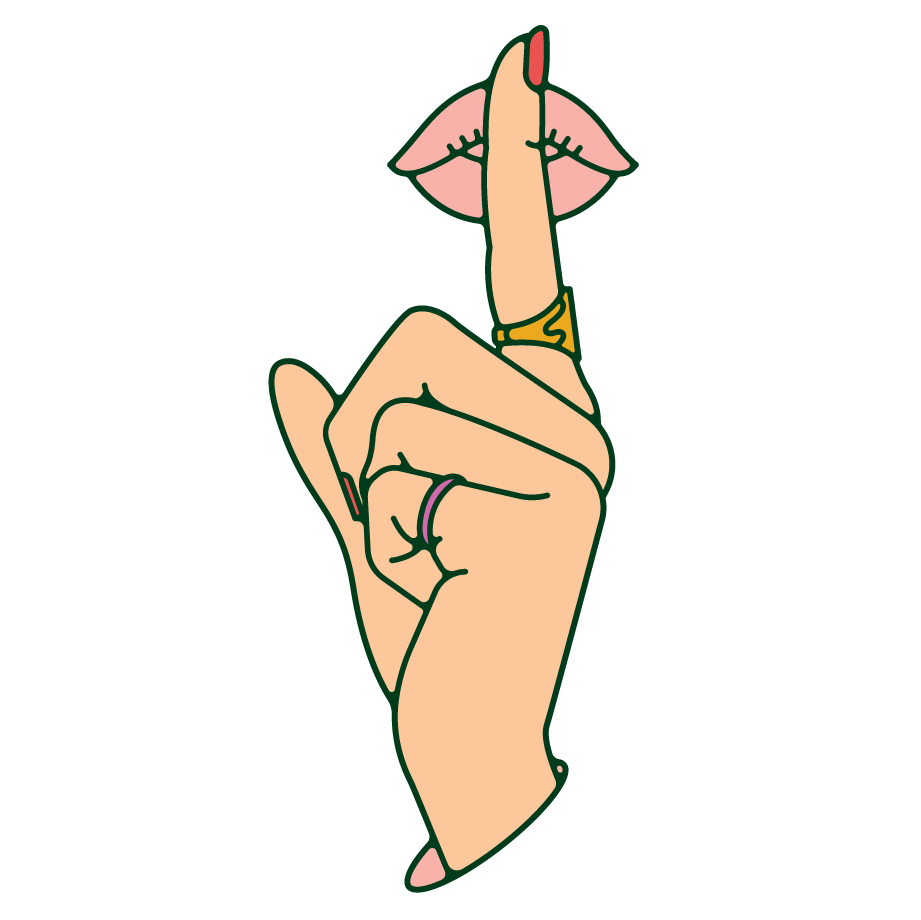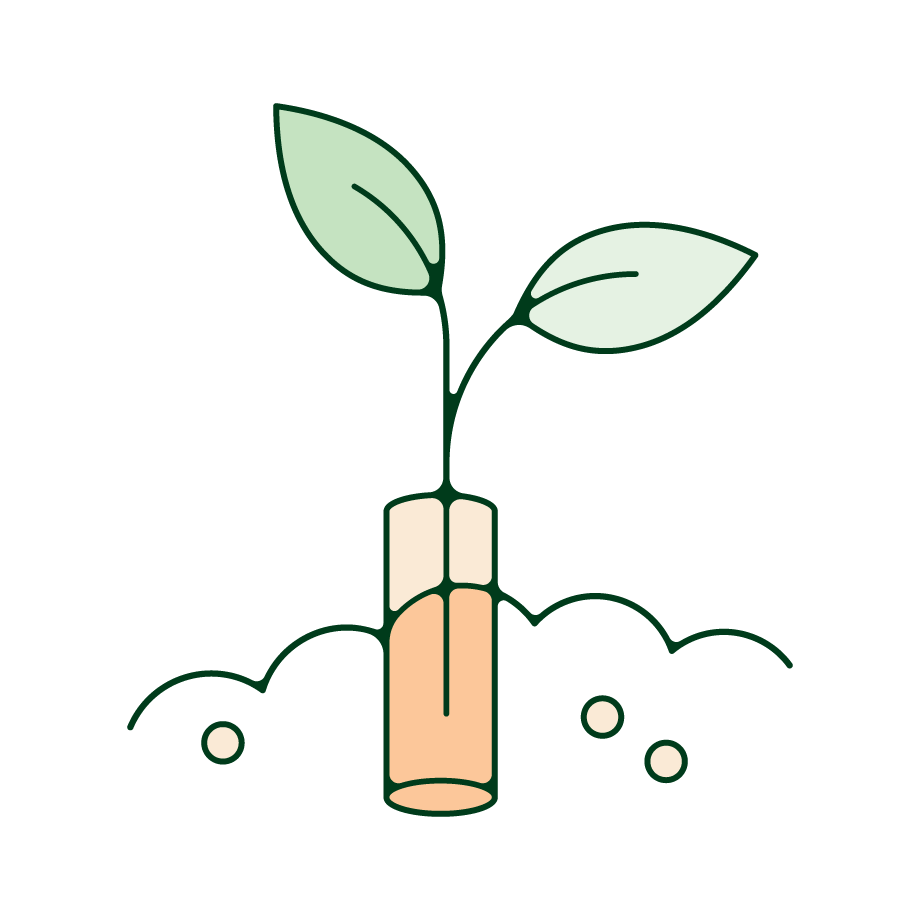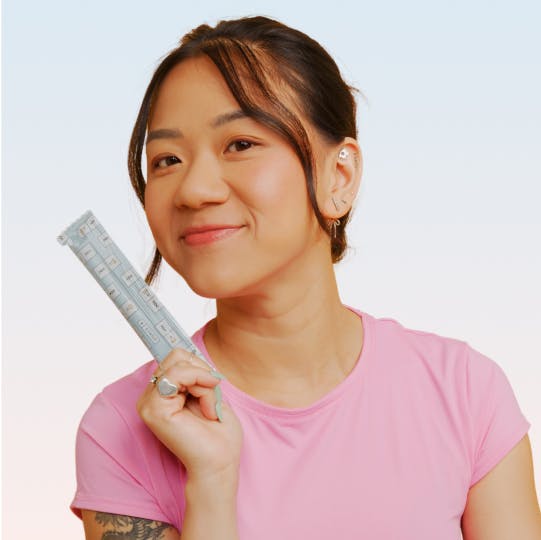Table of contents
1. The environmental cost of flushing tampons down the toilet
2. The economic cost of flushing sanitary products
3. So why do people still flush tampons?
4. But isn’t throwing tampons in the bin also bad for the environment?
5. Biodegradable and eco-friendly tampons
6. Final thoughts
Medically reviewed by Sarah Montagu (NPs, SRH). Sarah is a highly-qualified sexual and reproductive health nurse with 15+ years of experience.
Illustrated by Sabrina Bezerra, Erin Rommel & Valentin Slavov
Every day, an estimated 2.5 million used tampons are flushed down the toilet in the UK. In the US, with 34 million Americans using menstrual products and 70% of them relying on tampons, the potential scale of improperly disposed tampons could be even more staggering, highlighting a significant environmental challenge on both sides of the pond.
Our brains often struggle to process big numbers, so let's put that into perspective. If you stood in front of your toilet and flushed one tampon per second, it would take you 29 days to flush all those tampons down the loo.
That's a lot of tampons flushed each day, and it’s a problem because you should never ever put a used tampon down the toilet. A used tampon should always be placed in a bin. Here’s why.

The environmental cost of flushing tampons down the toilet
Flushing tampons is a major cause of environmental pollution and microplastic degradation in the UK. This is because tampons aren't always filtered out of sewage at wastewater treatment facilities, meaning that they end up in our rivers, seas, and on our beaches, where they can cause serious harm to wildlife. In fact, volunteer litter pickers from the Marine Conservation Society (MCS) have picked up more than 20,000 tampons, applicators, and sanitary pads from Britain's beaches over the past ten years.
Many people don't realise that mainstream tampons, just like so-called 'flushable wipes', contain plastic. Plastic-containing period products can take hundreds of years to break down, and during this process, microplastics enter our waterways. Whilst Daye products are completely plastic-free with our bio-based applicator this is still a global issue. Many other period products contain non-recyclable plastics, chlorine and other chemicals which pollute the water and are harmful to wildlife.
The economic cost of flushing sanitary products
In addition to tampons washing up on our beaches and leaking microplastics into our waterways, they wreak havoc on our sewer systems. Unlike toilet paper which breaks down in water, tampons are designed to absorb liquid. In our pipes and sewers, used tampons continue to absorb liquid, swelling up and causing blockages. Ever heard of the London fatberg?

Dealing with blocked sewer systems is extremely costly. Thames Water alone spends £18 million each year clearing 75,000 blockages from its sewers, many of which include menstrual hygiene products and wet wipes. These costs are then passed back onto us in our water bills. That's not to mention your personal maintenance and repair costs if you have to call out an expert to deal with your home's backed-up toilet and blocked plumbing system!
So why do people still flush tampons?
It's likely that the UK's persistent taboo around menstruation is part of the reason for the myth that you can flush tampons. Despite major gains in recent years such as Scotland's free period products bill, more than a quarter of UK women have experienced period shaming and 42% of men still don't want to buy period products for a partner because it's 'too embarrassing'.
It's no surprise, then, that for many people shame around menstruation and menstrual products is a contributing factor. Whether it's the fear of a partner or family member seeing a used tampon in the bin, consideration for public bathroom cleaners, anxiety about the smell of menstrual fluid, or even worries about pets that may get into the trash, many people still prefer to keep their bloody tampons out of sight and out of mind. The result? The oh-so-tempting convenience of flushing tampons. This is supported by research by hygiene services provider PHS which found that 24% of survey respondents flush tampons because it is 'less embarrassing'.

It’s not just women who deal with this. For trans and non-binary folk, flushing tampons may seem like the only option because of a lack of sanitary bins in men's bathrooms. Nobody wants to walk out of a public bathroom holding their period products wrapped in paper towels for later disposal.
In addition to shame and fear, Kate Blincoe, author of The No-Nonsense Guide to Green Parenting, writes in a Guardian article that many people may simply not know that they're not supposed to flush tampons because in the UK we tend not to talk about the specific details of menstruation. Interestingly, she adds that this '"flush it out of sight approach" is not shared by women in many other European countries, where binning is normal. As a result, sanitary items are found in much lower numbers on continental beaches.'
Many tampon and sanitary products manufacturers are also vague about disposal methods. A box of tampons may sport a small image of a toilet with a cross through it, but does that refer to the tampon applicators, packaging, or the tampon itself? Let's be honest; most of us don't spend long looking at the tampon box anyway. When you're on your period, you probably have more immediate things on your mind, such asperiod pain. You're not thinking about tampon disposal methods and sewer pipes – you're thinking about how many extra period products to pack in your bag and whether you have enough ibuprofen to get through the day.
But isn’t throwing tampons in the bin also bad for the environment?
It’s clear that you shouldn't flush tampons, but is putting them in the bin much better for the environment? Unfortunately, most conventional tampons also cause environmental issues when sent to landfill.A disposable tampon can be up to 90% plastic, equivalent to four plastic carrier bags, and they also often contain potentially harmful chemicals like dioxin chlorine and rayon which pollute air and water when they end up in landfill. Despite these negative environmental impacts, the bin is still the best option for tampon disposal.

Biodegradable and eco-friendly tampons
Recently, some tampon brands have created biodegradable tampons that are a more sustainable alternative to traditional plastic-filled feminine hygiene products. Eco-friendly tampons are a major step forward in fighting period waste; because they don't have microplastics or the potentially harmful chemicals of conventional tampons they're also far better for your body.
Biodegradable tampons have a wide range of benefits, but are these tampons flushable? Unfortunately, the answer is no. Although these tampons break down faster than traditional tampons and won't spill damaging microplastics into the environment, the problem of blocked plumbing systems and sewers remains. To properly dispose of eco-friendly period products, throw them in your bathroom bin or in the waste disposal bins provided in public bathrooms.
Here at Daye, we've created sustainable period products that are 100% organic. Our organic cotton tampons are totally biodegradable and are paired with sugarcane tampon applicators. We've also developed the world's first flushable tampon wrappers which dissolve in water and are friendly to the oceans and your plumbing system. Toss your used tampon and tampon applicator in the bin and pop your tampon wrapper in the toilet bowl for quick and easy disposal. We have also designed water-soluble tampon applicators and we’ll be introducing these in 2024.

Final thoughts
Ultimately, the only things that should ever go down your loo are the three Ps: Pee, Poo, and (toilet) Paper, as well as our water-soluble wrappers, which dissolve in water faster than toilet paper. It doesn't matter if you use amazing biodegradable tampons or plastic-filled ones – tampons should always go straight into the bin.
Although it's clear we should never flush tampons, the unfortunate truth is that throwing them in the bin isn't always easy. By UK law, all women's public bathrooms need to have adequate sanitary bins for tampon disposal, however, tampon disposal can still be tricky for trans and non-binary period havers. Plus, your friends or partners may not have an easily accessible bin in their bathroom, especially if they don't have periods themselves. For this reason, breaking down stigma and taboos around periods is essential to make sure that nobody feels they have to throw their used tampons down the toilet. Supporting campaigns for sanitary bins in men's bathrooms and gender neutral bathrooms is also crucial to make sure everyone has a place to throw away their hygiene products.
The good news is that things are looking up for period products and their environmental impact. With sustainable options on the market like Daye's tampons and pads, people like you can feel confident that when disposed of correctly their sanitary products are better for the planet. Furthermore, changing attitudes to menstruation and slowly declining taboos mean that growing numbers of people are talking and thinking about period waste. Encouragingly, one survey found that younger tampon users were less likely to flush tampons than their older counterparts. That is a good sign.
Want to find out more about the environmental impact of your period and how to reduce it? Check out our guide toHow to Have an Eco-Friendly Period.






